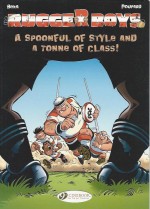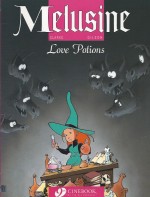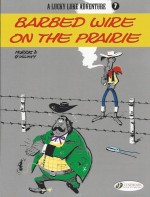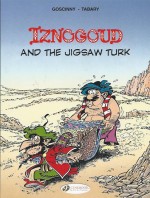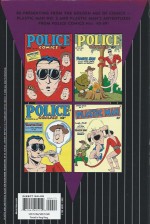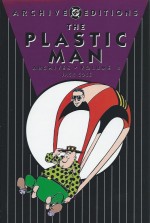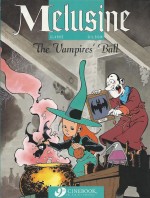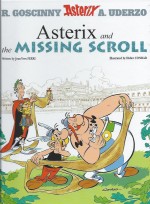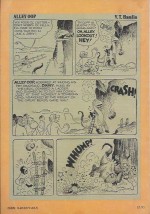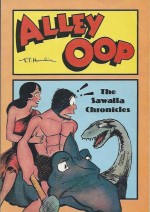
By many and various (Archie Comics)
ISBN: 978-1-936975-80-8
Win’s Christmas Gift Recommendation: For All Good Girls & Boys Who’ve Been Nice This Year 9/10
As long-term readers might recall, my good lady wife and I have a family ritual we’re not ashamed to share with you. Every Christmas we barricade the doors, draw the shutters, stockpile munchies and stoke up the radiators before settling down with a huge pile of seasonal comics from yesteryear.
There’s a few older DC’s, loads of Disney’s and some British annuals, but the vast preponderance is Archie Comics. From the earliest days this too-often neglected comics institution has quite literally “owned Christmas†with a gloriously funny, charming, nostalgically sentimental barrage of cannily-crafted stories capturing the spirit of the season through a range of comicbooks running from Archie to Veronica, Betty to Sabrina and Jughead to Santa himself…
For most of us, when we say comicbooks people’s thoughts turn to buff men and women in garish tights hitting each other, bending lampposts and lobbing trees or cars about, or stark, nihilistic crime, horror or science fiction sagas aimed at an extremely mature and sophisticated readership of confirmed fans – and indeed that has been the norm of late.
Throughout the years though, other forms and genres have waxed and waned but one that has held its ground over the years – although almost completely migrated to television these days – is the genre of teen-comedy begun by and synonymous with a carrot topped, homely (at first just plain ugly) kid named Archie Andrews.
MLJ were a small publisher who jumped on the “mystery-man†bandwagon following the debut of Superman. In November 1939 they launched Blue Ribbon Comics, promptly following-up with Top-Notch and Pep Comics. The content was the common blend of funny-book costumed heroes and two-fisted adventure strips, although Pep did make a little history with its first lead feature The Shield, who was the American industry’s first superhero to be clad in the flag (see America’s 1st Patriotic Hero: The Shield)
After initially revelling in the benefits of the Fights ‘N’ Tights game, Maurice Coyne, Louis Silberkleit and John Goldwater (MLJ, duh!) spotted a gap in their blossoming market and in December 1941 the costumed cavorters and two-fisted adventurers were gently nudged aside – just a fraction at first – by a wholesome, improbable and far-from-imposing new hero; an unremarkable (except, perhaps, for his teeth) teenager who would have ordinary adventures just like the readers, but with the laughs, good times, romance and slapstick emphasised.
Almost certainly inspired by the hugely popular Andy Hardy movies, Goldwater developed the concept of a youthful everyman protagonist and tasked writer Vic Bloom & artist Bob Montana with the job of making it work. Their precocious new notion premiered in Pep #22: a gap-toothed, freckle-faced, red-headed kid obsessed with impressing the pretty blonde girl next door.
A 6-page untitled tale introduced hapless boob Archie Andrews and wholesomely pretty Betty Cooper. The boy’s unconventional best friend and confidante Jughead Jones also debuted in the first story as did idyllic small-town utopia Riverdale. It was a huge hit and by the winter of 1942 the kid had won his own title.
Archie Comics #1 was MLJ’s first non-anthology magazine and with it began the slow transformation of the entire company. With the introduction of ultra-rich, raven-haired Veronica Lodge, all the pieces were in play for the industry’s second Genuine Phenomenon…
By 1946 the kids were in charge, so MLJ became Archie Comics, retiring most of its costumed characters years before the end of the Golden Age to become, to all intents and purposes, a publisher of family-friendly comedies. The hometown settings and perpetually fruitful premise of an Eternal Romantic Triangle – with girl-hating best bud Jughead Jones and scurrilous rival Reggie Mantle to test, duel and vex our boy in their own unique ways – the scenario was one that not only resonated with the readership but was infinitely fresh…
Archie’s success, like Superman’s, forced a change in content at every other publisher (except perhaps Gilberton’s Classics Illustrated) and led to a multi-media brand which encompasses TV, movies, newspaper strips, toys and merchandise, a chain of restaurants and, in the swinging sixties, a pop music sensation when Sugar, Sugar – from the animated TV cartoon – became a global pop smash. Clean and decent garage band “The Archies†has been a fixture of the comics ever since…
That Andrews boy is good-hearted, impetuous and lacking common sense, Betty his sensible, pretty girl next door who loves the ginger goof, and Veronica is rich, exotic and glamorous: only settling for our boy if there’s nobody better around. She might actually love him too, though. Archie, of course, is utterly unable to choose who or what he wants…
The unconventional, food-crazy Jughead is Mercutio to Archie’s Romeo, providing rationality and a reader’s voice, as well as being a powerful catalyst of events in his own right. That charming triangle (and annexe) has been the rock-solid foundation for seven decades of funnybook magic. Moreover the concept is eternally self-renewing…
This eternal triangle has generated thousands of charming, raucous, gentle, frenetic, chiding and even heart-rending humorous dramas ranging from surreal wit to frantic slapstick, with the kids and a constantly expanding cast of friends (boy genius Dilton Doily, genial giant jock Big Moose and aspiring comicbook cartoonist Chuck amongst many others) growing into an American institution and part of the nation’s cultural landscape.
The feature has thrived by constantly re-imagining its core archetypes; seamlessly adapting to the changing world outside its bright, flimsy pages, shamelessly co-opting youth, pop culture and fashion trends into its infallible mix of slapstick and young romance. Each and every social revolution has been painlessly assimilated into the mix and, over the decades, the company has confronted most social issues affecting youngsters in a manner always both even-handed and tasteful.
Constant addition of new characters such as African-American Chuck and his girlfriend Nancy, fashion-diva Ginger, Hispanic couple Frankie and Maria and spoiled home-wrecker-in-waiting Cheryl Blossom have contributed to a wide and appealingly broad-minded scenario. In 2010 Archie jumped the final hurdle when openly gay Kevin Keller became an admirable advocate capably tackling and dismantling the last major taboo in mainstream Kids’ comics.
One of the most effective tools in the company’s arsenal has been the never-failing appeal of the seasons and holiday traditions. In Riverdale it was always sunny enough to surf at the beach in summer and it always snowed at Christmas…
The Festive Season has never failed to produce great comics stories. DC especially have since their earliest days perennially embraced the magic of the holiday with a decades-long succession of stunning and sentimental Batman thrillers – as well as many other heroic team-ups incorporating Santa, Rudolph and all the rest.
Archie too started early and kept on producing year-end classics. The stories became so popular and eagerly anticipated that in 1954 the company created a specific title – Archie’s Christmas Stocking – to cater to the demand, even as it kept the winter months of its other periodicals stuffed with assorted tales of elves and snow and fine fellow-feeling…
This splendidly appealing, cheap-&-cheerful full-colour pocket-digest (as long as your pockets are both deep and strong), gathers and re-presents a superb selection of cool Yule extravaganzas of ancient and relatively recent vintages which begins, after jolly, informative Introduction ‘Christmas in Riverdale!’ from Paul Castiglia, with a selection from ‘The Early Years’.
It naturally kicks off with ‘Archie Andrews’ Christmas Story’ by Montana (from Jackpot Comics #7 1942) wherein our hapless boy wonder is even more obvious than usual and ends up with a surfeit of the same present from everybody he cares about. His antics to offload the unwanted extras lead to a painful comeuppance…
Also from 1942 and Montana, ‘The Case of the Missing Mistletoe’ debuted Archie #1, and found Archie and Jughead at loggerheads after unknowingly taking identical twins to a party whilst a few unchanging years later ‘Christmas Cheers’ (Pep Comics #46, 1944, by Harry Sahle, Ed Goggin & Ginger) saw the red-headed fool in deep trouble after losing his diligently deliberated present list – and all his savings…
The next two tales originate from Archie Giant Series #5, 1958, and are both by Dan DeCarlo, Rudy Lapick & Vincent DeCarlo, beginning with ‘Generous to a Fault’ wherein Betty and Veronica convince all the boys in town to elect the most “giving†among them from over the last year and instigate a major riot, whilst ‘Seasonal Smooch’ sees Reggie abusing mistletoe privileges with agonising consequences…
The theme of ‘Christmas Trees and Decorations’ opens with ‘A Christmas Tale’ (Life With Archie #33, 1965 by Frank Doyle, Bob White & Marty Epp) as arch-rivals Andrews and Mantle try to establish the manly pecking order by competing to cut down the best tree before ‘ ‘Tis the Season for Extreme Decorating’ (Betty & Veronica Spectacular #80 2007, by Dan Parent, Rich Koslowski, Barry Grossman & Jack Morelli) finds the distaff competitors succumbing to another bout of insane one-upmanship over who can spruce up and illuminate a home best…
When loaded Mr. Lodge hires ‘Tree Experts’ (Veronica #191, 2009 by Mike Pellowski, Parent, Jim Amash, Grossman & Morelli) to trim the Mansion’s huge pine, Archie’s wistful nostalgia produces a sentimental change of heart before ‘Price Clubbed’ (Archie Digest #248, 2008, Pellowski, Randy Elliott & Bob Smith) finds him and his own dad spending special time obtaining their tree. The chapter concludes with Betty & Veronica one-pager ‘Snow Flakes’ featuring some punishingly accurate satirical snowmen…
‘Gifts and Giving’ opens with a ‘Holiday Rush’ (Holiday Fun Digest #11 2006 from Pellowski, Tim Kennedy, Koslowski, Grossman & Morelli) as Betty and Veronica bemoan the early advent of Xmas overload, ‘Gift Exchange’ (Betty & Veronica #87 1965, Doyle, Dan & Vincent DeCarlo) then deals with the repercussions of the little rich girl giving her friends away – as presents – and ‘Christmas Misgivings’ (Veronica #60 1997, Barbara Slate, Jeff Shultz, Rudy Lapick, Grossman & Bill Yoshida) sees her friends reactions after they all sneak a peek in Ronnie’s shopping bags and reach all the wrong conclusions about who’s getting what…
‘Stamp of Approval’ (Archie Giant Series #6 1959 by Doyle, Dan DeCarlo, Lapick Sheldon Brodsky & Vincent DeCarlo) sees Betty obsessed with collecting Green Stamps to offset her regular lack of funds for presents whilst ‘Gift Exchange’ (Holiday Fun Digest #11 2006 by Pellowski, Tim Kennedy & Al Nickerson) finds Chuck and Big Moose inadvertently selecting perfect prezzies for their girlfriends by mixing up their purchases…
‘Snuggle Up’ (Betty & Veronica #244, 2009 by Parent, Shultz, Koslowski, Grossman & Morelli) then reveals how the loaded Lodge lass really feels about the hideous thing Archie got for her when left all alone…
‘Fit to be Yuletide’ (Jughead #125, by Craig Boldman, Rex Lindsey, Koslowski, Grossman & Morelli from 2000) follows snide sidekick Juggy as he goes to extraordinary lengths to find the perfect present for his arch-enemy Trula Twist after which selfish, conceited Reggie surprises everyone when they follow to see how he actually spends his holidays in ‘The Gift Horse Laugh!’ from Archie Digest #248, (2008 by Pellowski, Pat Kennedy & Ken Selig).
The next selection concentrates on ‘Playing Santa’, opening with ‘Wanted: Santa Claus’ (Archie and Me #26 from 1969, by Joe Edwards & Jon D’Agostino) wherein long-suffering School Principal Mr. Weatherbee pines for the annual dress-up role he claims to despise and ‘Santa Claws’ (Archie Digest #248, 2008 from Bill Golliher, Pat Kennedy & Amash) sees our red-headed loon deeply regretting accepting the opportunity to make extra cash by being the Santa in a pet shop.
Even more upset is the raven-haired rich girl when she inveigles the position of ‘Santa’s Little Helper’ (Veronica #176, 2007 Parent, Amash, Grossman & Teresa Davidson) to be near Archie yet ends up as elf assistant to a creepy stalker-nerd before enjoying a jumbo crop of jolly red fellows after announcing there’s a ‘Santa Shortage’ (Betty & Veronica #231, 2008 by Pellowski, Shultz & Al Milgrom) at a party for needy kids. The chapter concludes with a vivacious pin-up of ‘Veronica’s Christmas Card’…
‘Santa and His Elves’ opens with ‘Playing Santa’ from Jughead & Friends Digest #35 (2010 by Pellowski, Fernando Ruiz, Milgrom, D’Agostino & Grossman) as a posse of pixies pressgang laconic young Mr. Jones into making the all-important delivery run as St. Nick is out of action, after which elfin Lisa seemingly spoils the Season of Giving with her new-fangled online ordering website to replace letters to Santa. Oddly, things work out fine anyway, as everyone gets ‘Surprise Presents’ (Archie Digest #248, 2008 by George Gladir, Shultz, Koslowski, Morelli & Grossman)…
‘Pizza and Good Cheer’ (Jughead’s Double Digest #145, 2009 from Pellowski, Ruiz, Nickerson, Morelli & Grossman) displays Jughead at his most engaging when the greedy goof wins a year’s worth of pies and hands them out to Riverdale’s destitute, unaware that the ever-watching little people have had a hand in his generous gesture…
This section then slapsticks to a sharp stop via a typically rambunctious pin-up of ‘Archie’s Christmas Card’…
Jingles the Elf has been an Archie regular for decades and ‘Santa’s Sprites’ raids the archives for some of his best moments, beginning with first appearance ‘A Job for Jingles’ from Archie Giant Series #10 (1961 by Doyle, Dan DeCarlo, Lapick & Vincent DeCarlo) as the playful imp – who cannot be seen by adults – spends his day off just like any normal kid.
He resurfaced in ‘Return of Jingles’ (Archie Giant Series #20, 1963 by the same creative team) but found himself upstaged by a brace of his workbench associates who wanted to see for themselves how much fun humans have, but in ‘Season of Magic’ (Archie Giant Series #158, 1969, Doyle, White & Yoshida) Jingles met his puckish, pranksterish match when Reggie decided to teach him a lesson…
Perhaps it was in retaliation for ‘Treed’ (Archie Giant Series #150, 1968 Doyle, Al Hartley & Yoshida) wherein Jingles aided and abetted Archie in the yearly ritual of impressing Ronnie by chopping down a Christmas fir for the Lodge Mansion…
Rivalry resulted in sweet music in ‘Jingles Rocks’ (Archie & Friends #21, 2012 by Golliher, Lapick, Grossman & Yoshida) when the showy sprite tried out as lead singer in Archie’s band but had to make some radical wardrobe changes to be seen and heard by the over-21s…
Always adept at seeing issues from the female point of view, the editors soon added a feminine counterpart to Jingles; someone with the same magical powers and festive mission, but a bitter despised rival – and in a miniskirt…
‘Some Things Never Change’ (Betty & Veronica #156, 2001 by Kathleen Webb, Shultz & Henry Scarpelli) saw effusive Sugar Plum Fairy pop in for her annual visit only to find the too-cool kids already out of Christmas cheer. Her solution is carol singing…
Another year and Webb, Dan DeCarlo, Grossman & Yoshida crafted ‘Visions of a Sugar Plum’ (Betty & Veronica #108, 1997). Now it was the twinkly sprite who couldn’t catch the mood – until B & R convinced her to turn human-sized and come shopping. Everything was fine until hunky elf boyfriend Troll – the cause of her Yule blues – came to Riverdale to find her and made a lasting impression on the town’s available young ladies…
In ‘Tis the Season to be Jolly’ (Betty & Veronica #120, 1998, Webb, Dan DeCarlo, Alison Flood, Grossman & Yoshida) Sugar Plum brought flu-ridden Ronnie a stolen dose of Santa’s special pick-me-up – and the cure proved worse than the ailment – whilst in ‘She’s So Gifted’ (Veronica #191, 2009 by Parent & Amash) the fairy comforted our spoiled heiress after everybody decided to make presents and Ronnie found she had no talent for anything. At least that’s what she thought until Sugar Plum pointed out the obvious thing she’s overlooked…
Santa himself sent Sugar to sort out a depletion of seasonal cheer afflicting B & V in ‘The Gifted’ (Betty & Veronica #169, 2002 Webb, Shultz, Scarpelli, Yoshida &Grossman) whilst an all-out magic war broke out in Riverdale when ‘Holiday Watch’ (Betty & Veronica #244, 2009 by Parent, Shultz, Koslowski, Morelli & Grossman) saw the Fairy and Jingles vying for the young mortals’ attentions before ‘Jingles All the Way’ (Betty & Veronica Spectacular #86, 2009 by Parent, Koslowski, Rosario “Tito†Peña & Morelli) proves an old truism when the elfin enemies – thanks to Betty, Ronnie and Archie – are convinced to quit hissing and start kissing…
The merriment then concludes with manga-styled ‘The Naughty Clause’ (Archie #639, 2013 by Alex Segura, Gisele, Koslowski, Digikore Studios & Morelli) as Jingles takes the entire gang to the North Pole so Santa can give Reggie a little personal attitude adjustment…
‘Once upon a Yuletide’ focuses on the odder ends of Archie history with ‘A Children’s Story’ coming from The Adventures of Little Archie #29, (Winter 1963-64 by amazing one-man band Dexter Taylor) which see the little red-headed scamp entertain a lost Santa Claus from a strange other world whilst ‘Let it Snow’ (from Archie’s Weird Mysteries #18, 2002 by Paul Castiglia, Ruiz, Koslowski, Stephanie Vozzo & Vickie Williams) introduces a quartet of seasonal superheroes to while away a quiet night of tale-telling. The fanciful feast finishes with two half-page gag-fests starring Dan DeCarlo’s Sabrina the Teenage Witch enduring a ‘Hanging Hang-Up’ and experiencing ‘Foto Fun’…
A selection of ‘Winter Wonderland’ escapades starts with ‘Ski-Cart Catastrophe’ from Laugh Comics #300 (1976, by George Gladir, Sal Amendola, D’Agostino, Grossman & Yoshida) wherein the lads covert a shopping cart into an idiot-powered ski-mobile, resulting in many pains for them and pained looks from the girls after which golden greats of slapstick Frank Doyle & Harry Lucey treat us to a ‘Slay Ride’ (Archie Giant Series #5, 1958) wherein Archie and a borrowed horse make much manic mischief in the Lodge Mansion…
‘Frosty Fairy Tales’ (Betty & Veronica #120, 1998 by Pellowski, Dan DeCarlo, Grossman & Yoshida) sees Betty get the good-looking guy – but not Archie – when she and Ronnie go skiing and it all concludes with a silent romantic interlude involving ‘Snowmobile Snuggles’…
‘Holiday Party Time’ shows the gang at their best and worst starting with ‘Party Time’ (Betty & Veronica Double Digest #176, 2010 by Gladir, Shultz & D’Agostino) as Ronnie refuses to give up a long planned-for ball by merging it with a charity supper after her guests all decide to help the needy…
Her soiree for the town’s pets is much less of a hit with the ‘Party Dogs’ (Betty & Veronica #222, 2007, Gladir, Shultz & Milgrom) but some ‘Give and Take’ (Archie Digest #258, 2009, Parent, Amash & Grossman) turns a pot-luck shindig into the roaring success of the season. After voracious Jughead accidentally eats all the treats intended for Riverdale Orphanage he pulls out all the stops to ensure ‘The Party’ (Betty & Veronica Digest #189, 2009, Gladir, Shultz & D’Agostino, Morelli & Grossman) is still a howling hit…
Closing out this epic tome is a hearty heaping of ‘Christmas Spirit’ beginning with ‘You’re Cooked’ (Veronica #176, 2007 by Parent, Amash, Grossman& Teresa Davidson) as Betty teaches infamous Anti-chef Ronnie how to cook something festive – and Juggy descends like a locust – whilst ‘She Needs a Little Christmas’ (Betty & Veronica #132, 1999, Webb, Dan DeCarlo, Scarpelli, Grossman & Yoshida) finds him teaching the rich miss a few things about flaunting her wealth…
Ronnie’s social credibility takes a mortal hit when the true origin of the hyper-prestigious and ultra-exclusive Lodge family Christmas confection is revealed in ‘A Couple of Fruitcakes’ from Betty & Veronica #169 (2002 by Webb, Shultz & Scarpelli) and an impromptu sing-along turns into an inclusive town event in ‘Here We Come A-Caroling’ (Holiday Fun Digest #8, 2003, by Greg Crosby, Tim Kennedy, Lapick & Yoshida) before all the graphic good will pops to a stop with a deep dip into ‘Archie’s Holiday Fun Scrapbook’ (Holiday Fun Digest #12, 2007, by Parent) offering revealing glances at the Riverdale gang over many happy years.
These are perfect stories for young and old alike, crafted by a host of Santa’s most talented Helpers, epitomising the magic of the Season and celebrating the perfect wonder of timeless children’s storytelling. What kind of Grinch could not want this book in their kids’ stocking (from where it can most easily be borrowed)?
© 2014 Archie Comics Publications, Inc. All rights reserved.
